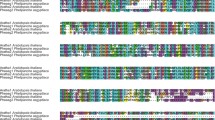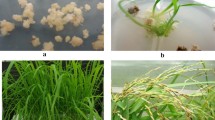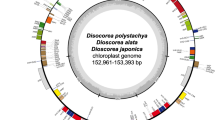Abstract
The genus Thuja is ideal for investigating the genetic basis of the East Asia–North America disjunction. The biogeographical background of the genus is debatable and an adaptive strategy is lacking. Through the analysis and mining of comparative transcriptomes, species differentiation and positively selected genes (PSGs) were identified to provide information for understanding the environmental adaptation strategies of the genus Thuja. De novo assembly yielded 44,397–74,252 unigenes of the five Thuja species with contig N50 length ranging from 1,559 to 1,724 bp. Annotations revealed a similar distribution of functional categories among them. Based on the phylogenetic trees constructed using the transcriptome data, T. sutchuenensis was divided first, followed by T. plicata and T. occidentalis. The final differentiation of T. koraiensis and T. standishii formed a clade. Enrichment analysis indicated that the PSGs of the North American Thuja species were involved in plant hormone signal transduction and carbon fixation of photosynthetic organisms pathways. The PSGs of East Asian Thuja were related to phenolic, alkaloid, and terpenoid synthesis, important stress-resistant genes and could increase plant resistance to external environmental stresses. This study discovered numerous aroma synthetic-related PSGs including terpene synthase (TPS) genes and lipid phosphate phosphatase 2 (LPP2), associated with the synthetic aroma of T. sutchuenensis. Physiological indicators, such as the contents of soluble sugars, total chlorophyll, total phenolics, and total flavonoids were determined, which are consistent with the PSGs enrichment pathways associated with adaptive strategies in the five Thuja species. The results of this study provide an important basis for future studies on conservation genetics.






Similar content being viewed by others
Explore related subjects
Discover the latest articles and news from researchers in related subjects, suggested using machine learning.References
Abbas F, Guo S, Zhou Y, Wu J, Amanullah S, Wang H, Shen J (2022) Metabolome and transcriptome analysis of terpene synthase genes and their putative role in floral aroma production in Litchi chinensis. Physiol Plantarum 174(6):e13796. https://doi.org/10.1111/ppl.13796
Adelalu KF, Zhang X, Qu XJ, Landis JB, Shen J, Sun YX, Meng AP, Sun H, Wang HC (2020) Plastome phylogenomic and biogeographical study on Thuja (Cupressaceae). Biomed Res Int 2020:1–13. https://doi.org/10.1155/2020/8426287
Byeon JG, Cheon KI, Lee DH, Heo TI, Lee JW, Kim JD, Park BJ (2020) The character of community structure and distribution for Thuja koraiensis Nakai. South Korea Korean J Plant Res 33(2):93–105. https://doi.org/10.1016/S0378-1127(96)03976-X
Carter G, Farjon A (2013) Thuja standishii. IUCN Red List of Threatened Species. e.T42264A2968225. https://doi.org/10.2305/IUCN.UK.2013-.RLTS.T42264A2968225.en
Chambers KL (1993) Thuja occidentalis. In: Flora of North America Editorial Committee (ed.). Flora of North America North of Mexico (FNA). 2. New York and Oxford. Retrieved 24 September 2016-via eFloras.org, Missouri Botanical Garden, St. Louis, MO & Harvard University Herbaria, Cambridge, MA
Cong Y, Saurer M, Bai E, Siegwolf R, Gessler A, Liu K, Han H, Dang Y, Xu W, He HS (2022) In situ 13CO2 labeling reveals that alpine tree line trees allocate less photoassimilates to roots compared with low-elevation trees. Tree Physiol 42(10):1943–1956. https://doi.org/10.1093/treephys/tpac048
Crisp MD, Cook LG (2011) Cenozoic extinctions account for the low diversity of extant gymnosperms compared with angiosperms. New Phytol 192(4):997–1009. https://doi.org/10.1111/j.1469-8137.2011.03862.x
Dao TTH, Linthorst HJM, Verpoorte R (2011) Chalcone synthase and its functions in plant resistance. Phytochem Rev 10:397–412. https://doi.org/10.1007/s11101-011-9211-7
Earle CJ (2018) Thuja plicata. The Gymnosperm Database. https://www.conifers.org/
Farjon A, Page CN (1999) Conifers: status survey and conservation action plan. IUCN, IUCN-SSC Conifer Specialist Group, Gland, Switzerland and Cambridge, UK
Farjon A (2005) Monograph of Cupressaceae and Sciadopitys. Royal Botanic Gardens, Kew
Geng DL, Shen XX, Xie YP, Yang YS, Bian RL, Gao YQ, Li PM, Sun LY, Feng H, Ma FW (2020) Regulation of phenylpropanoid biosynthesis by MdMYB88 and MdMYB124 contributes to pathogen and drought resistance in apple. Hortic Res 7:102. https://doi.org/10.1038/S41438-020-0324-2
Gupta M, Sharma K (2021) A review of phyto-chemical constituent and pharmacological activity of Thuja species. Int J Pharm Res Appl 6(1): 85–95. https://doi.org/10.35629/7781-06018595
Han M, Xu MY, Su T, Wang SZ, Wu LD, Feng JH, Ding CJ (2022) Transcriptome analysis reveals critical genes and pathways in carbon metabolism and ribosome biogenesis in Poplar fertilized with glutamine. Int J Mol SCI 23(17):9998. https://doi.org/10.3390/ijms23179998
Hao Y, Xiong Y, Cheng YL, Song G, Jia CX, Qu YH, Lei FM (2019) Comparative transcriptomics of 3 high-altitude passerine birds and their low-altitude relatives. Proc Natl Acad Sci 116(24):11851–11856. https://doi.org/10.1073/pnas.1819657116
Kalyaanamoorthy S, Minh BQ, Wong TK, Von Haeseler A, Jermiin LS (2017) ModelFinder: fast model selection for accurate phylogenetic estimates. Nat Methods 14(6):587–589. https://doi.org/10.1038/nmeth.4285
Kim YS, Chang CS, Lee H, Gardner M (2011) Thuja koraiensis. IUCN Red List of Threatened Species. e.T31245A9619180. https://doi.org/10.2305/IUCN.UK.2011-2.RLTS.T31245A9619180.en
Kong DJ, Li MJ, Dong ZH, Ji HT, Li X (2015) Identification of TaWD40D, a wheat WD40 repeat-containing protein that is associated with plant tolerance to abiotic stresses. Plant Cell Rep 34:395–410. https://doi.org/10.1007/s00299-014-1717-1
Leslie AB, Beaulieu JM, Rai HS, Crane PR, Donoghue MJ, Mathews S (2012) Hemisphere-scale differences in conifer evolutionary dynamics. Proc Natl Acad Sci USA 109(40):16217–16221. https://doi.org/10.1073/pnas.1213621109
Li JH, Xiang QP (2005) Phylogeny and biogeography of Thuja L. (Cupressaceae), an eastern Asian and North American disjunct genus. J Integr Plant Biol 47:651–659. https://doi.org/10.1111/j.1744-7909.2005.00087.x
Li JL, Zhang YJ, Ruhsam M, Milne RI, Wang Y, Wu DY, Jia SY, Tao TZ, Mao KS (2022) Seeing through the hedge: Phylogenomics of Thuja (Cupressaceae) reveals prominent incomplete lineage sorting and ancient introgression for Tertiary relict flora. Cladistics 38(2):187–203. https://doi.org/10.1111/cla.12491
Liu ML, Li XR, Liu YB, Cao B (2013b) Regulation of flavanone 3-hydroxylase gene involved in the flavonoid biosynthesis pathway in response to UV-B radiation and drought stress in the desert plant, Reaumuria soongorica. Plant Physiol Bioch 73:161–167. https://doi.org/10.1016/j.plaphy.2013.09.016
Liu W, Zhang RB, Tian N, Xu X, Cao YJ, Xian M, Liu HZ (2015) Utilization of alkaline phosphatase PhoA in the bioproduction of geraniol by metabolically engineered Escherichia coli. Bioengineered 6(5):288–293. https://doi.org/10.1080/21655979.2015.1062188
Liu XW, Wang YH, Shen SK (2022) Transcriptomic and metabolomic analyses reveal the altitude adaptability and evolution of different-colored flowers in alpine Rhododendron species. Tree Physiol 42(5):1100–1113. https://doi.org/10.1093/treephys/tpab160
Liu JF, Shi SQ, Chang EM, Yang WJ, Jiang ZP (2013a) Genetic diversity of the critically endangered Thuja sutchuenensis revealed by ISSR markers and the implications for conservation. Int J Mol Sci 14(7): 14860–14871. https://doi.org/10.3390/ijms140714860
Lu Y, Ran JH, Guo DM, Yang ZY, Wang XQ (2014) Phylogeny and divergence times of gymnosperms inferred from single-copy nuclear genes. PLoS ONE 9(9): e107679. https://doi.org/10.1371/journal.pone.0107679
Minore D (1990) Thuja plicata Donn ex D. Don–western redcedar. Silvics N Am 1:590–600
Oyama-Okubo N, Mikanagi Y (2023) Analysis of floral scent components of Rosa foetida Herrm., a rose with an unpleasant fragrance. Horticult J 92(2): 189–196. https://doi.org/10.2503/hortj.QH-050
Patra B, Pattanaik S, Schluttenhofer C, Yuan L (2018) A network of jasmonate−responsive bHLH factors modulate monoterpenoid indole alkaloid biosynthesis in Catharanthus roseus. New Phytol 217(4):1566–1581. https://doi.org/10.1111/nph.14910
Peng D, Wang XQ (2008) Reticulate evolution in Thuja inferred from multiple gene sequences: implications for the study of biogeographical disjunction between eastern Asia and North America. Mol Phylogenet Evol 47(3):1190–1202. https://doi.org/10.1016/j.ympev.2008.02.001
Rahi ML, Mather PB, Ezaz T, Hurwood DA (2019) The molecular basis of freshwater adaptation in prawns: Insights from comparative transcriptomics of three Macrobrachium species. Genome Biol Evol 11(4):1002–1018. https://doi.org/10.1093/gbe/evz045
Sun JJ, Zhou T, Zhang RT, Jia Y, Zhao YM, Yang J, Zhao GF (2019) Comparative transcriptomes and development of expressed sequence tag–simple sequence repeat markers for two closely related oak species. J Syst Evol 57(5):440–450. https://doi.org/10.1111/jse.12469
Wu Q, Tong W, Zhao HJ, Ge RH, Li RP, Huang J, Li FD, Wang YL, Mallano AI, Deng WW, Wang WJ, Wan XC, Zhang ZZ, Xia EH (2022) Comparative transcriptomic analysis unveils the deep phylogeny and secondary metabolite evolution of 116 Camellia plants. Plant J 111(2):406–421. https://doi.org/10.1111/tpj.15799
Xiang QP, Fajon A, Li ZY, Fu LK, Liu ZY (2002) Thuja sutchuenensis: a rediscovered species of the Cupressaceae. Bot J Linn Soc 139(3):305–310. https://doi.org/10.1046/j.1095-8339.2002.00055.x
Yang ZH (1997) PAML: a program package for phylogenetic analysis by maximum likelihood. Comput Appl Biosci 13(5):555–556. https://doi.org/10.1093/bioinformatics/13.5.555
Yousuf PY, Hakeem KUR, Chandna R, Ahmad P (2012) Role of glutathione reductase in plant abiotic stress. abiotic stress responses in plants: metabolism. In: Ahmad P, Prasad M (eds) Abiotic stress responses in plants. Springer, New York, NY. https://doi.org/10.1007/978-1-4614-0634-1_8
Zhang L, Yan HF, Wu W, Yu H, Ge XJ (2013) Comparative transcriptome analysis and marker development of two closely related Primrose species (Primula poissonii and Primula wilsonii). BMC Genom 14(1):1–13. https://doi.org/10.1186/1471-2164-14-329
Zhao CH, Yu ZM, Silva JATD, He CM, Wang HB, Si C, Zhang MZ, Zeng DQ, Duan J (2020) Functional characterization of a Dendrobium officinale geraniol synthase DoGES1 involved in floral scent formation. Int J Mech Sci 21(19):7005. https://doi.org/10.3390/ijms21197005
Zhou T, Chen C, Wei Y, Chang YX, Bai GQ, Li ZH, Kanwal N, Zhao GF (2016) Comparative transcriptome and chloroplast genome analyses of two related Dipteronia species. Front Plant Sci 7:1512. https://doi.org/10.3389/fpls.2016.01512
Zhu XB, Liang SH, Yin JJ, Yuan C, Wang J, Li WT, He M, Wang JC, Chen WL, Ma BT, Wang YP, Qin P, Li SG, Chen XW (2015) The DnaJ OsDjA7/8 is essential for chloroplast development in rice (Oryza sativa). Gene 574(1):11–19. https://doi.org/10.1016/j.gene.2015.07.067
Zou K, Liu XD, Zhang D, Yang Q, Fu SD, Meng DL, Chang WQ, Li R, Yin HQ, Liang YL (2019) Flavonoid biosynthesis is likely more susceptible to elevation and tree age than other branch pathways involved in phenylpropanoid biosynthesis in Ginkgo leaves. Front Plant Sci 10:983. https://doi.org/10.3389/fpls.2019.00983
Author information
Authors and Affiliations
Corresponding author
Additional information
Publisher's Note
Springer Nature remains neutral with regard to jurisdictional claims in published maps and institutional affiliations.
Project funding: This work was supported by the National Natural Science Foundation of China (31870664), the 948 Program of National Forestry and Grassland Administration (2013-4-47), and the National Key Research and Development Program of China (2022YFD2200103).
The online version is available at http://www.springerlink.com.
Corresponding editor: Yanbo Hu.
Supplementary Information
Below is the link to the electronic supplementary material.
Rights and permissions
Springer Nature or its licensor (e.g. a society or other partner) holds exclusive rights to this article under a publishing agreement with the author(s) or other rightsholder(s); author self-archiving of the accepted manuscript version of this article is solely governed by the terms of such publishing agreement and applicable law.
About this article
Cite this article
Chang, E., Liu, X., Chen, J. et al. Comparative transcriptomes reveal the disjunction adaptive strategy of Thuja species in East Asia and North America. J. For. Res. 34, 1963–1974 (2023). https://doi.org/10.1007/s11676-023-01648-9
Received:
Accepted:
Published:
Issue Date:
DOI: https://doi.org/10.1007/s11676-023-01648-9




